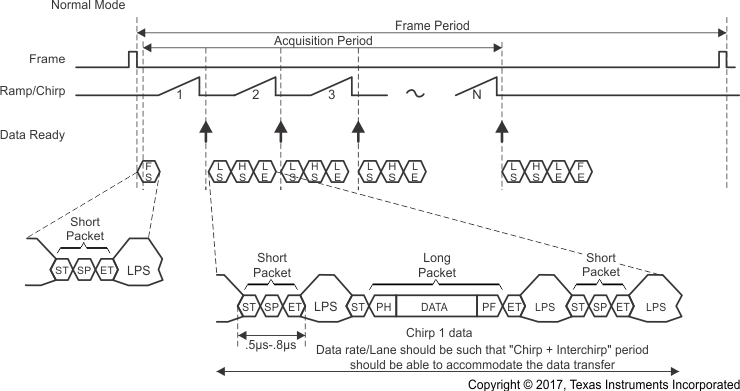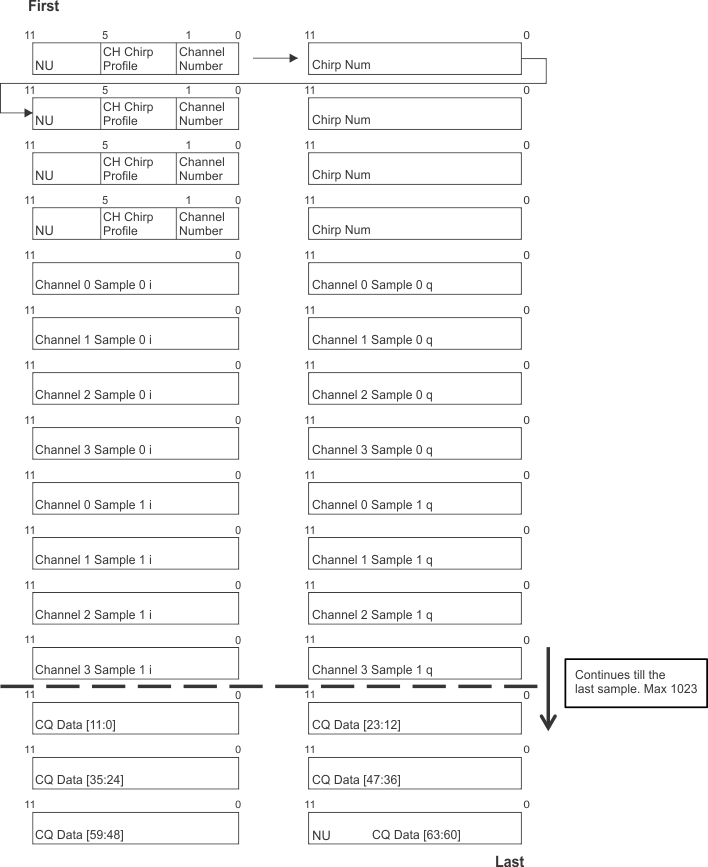ZHCSHP9C May 2017 – October 2018 IWR1443
PRODUCTION DATA.
- 1器件概述
- 2修订历史记录
- 3Device Comparison
- 4Terminal Configuration and Functions
-
5Specifications
- 5.1 Absolute Maximum Ratings
- 5.2 ESD Ratings
- 5.3 Power-On Hours (POH)
- 5.4 Recommended Operating Conditions
- 5.5 Power Supply Specifications
- 5.6 Power Consumption Summary
- 5.7 RF Specification
- 5.8 Thermal Resistance Characteristics for FCBGA Package [ABL0161]
- 5.9
Timing and Switching Characteristics
- 5.9.1 Power Supply Sequencing and Reset Timing
- 5.9.2 Synchronized Frame Triggering
- 5.9.3 Input Clocks and Oscillators
- 5.9.4 Multibuffered / Standard Serial Peripheral Interface (MibSPI)
- 5.9.5 LVDS Interface Configuration
- 5.9.6 General-Purpose Input/Output
- 5.9.7 Controller Area Network Interface (DCAN)
- 5.9.8 Serial Communication Interface (SCI)
- 5.9.9 Inter-Integrated Circuit Interface (I2C)
- 5.9.10 Quad Serial Peripheral Interface (QSPI)
- 5.9.11 JTAG Interface
- 5.9.12 Camera Serial Interface (CSI)
- 6Detailed Description
- 7Applications, Implementation, and Layout
- 8Device and Documentation Support
- 9Mechanical, Packaging, and Orderable Information
6.6.1 A2D Data Format Over CSI2 Interface
The IWR1443 device uses MIPI D-PHY / CSI2-based format to transfer the raw A2D samples to the external MCU. This is shown in Figure 6-5.
- Supports four data lanes
- CSI-2 data rate scalable from 150 Mbps to 600 Mbps per lane
- Virtual channel based
- CRC generation

Frame Start – CSi2 VSYNC Start Short Packet
Line Start – CSI2 HSYNC Start Short Packet
Line End – CSI2 HSYNC End Short Packet
Frame End – CSi2 VSYNC End Short Packet
Figure 6-5 CSI-2 Transmission Format Line Start – CSI2 HSYNC Start Short Packet
Line End – CSI2 HSYNC End Short Packet
Frame End – CSi2 VSYNC End Short Packet
The data payload is constructed with the following three types of information:
- Chirp profile information
- The actual chirp number
- A2D data corresponding to chirps of all four channels
- Interleaved fashion
- Chirp quality data (configurable)
The payload is then split across the four physical data lanes and transmitted to the receiving D-PHY. The data packet packing format is shown in Figure 6-6
 Figure 6-6 Data Packet Packing Format for 12-Bit Complex Configuration
Figure 6-6 Data Packet Packing Format for 12-Bit Complex Configuration